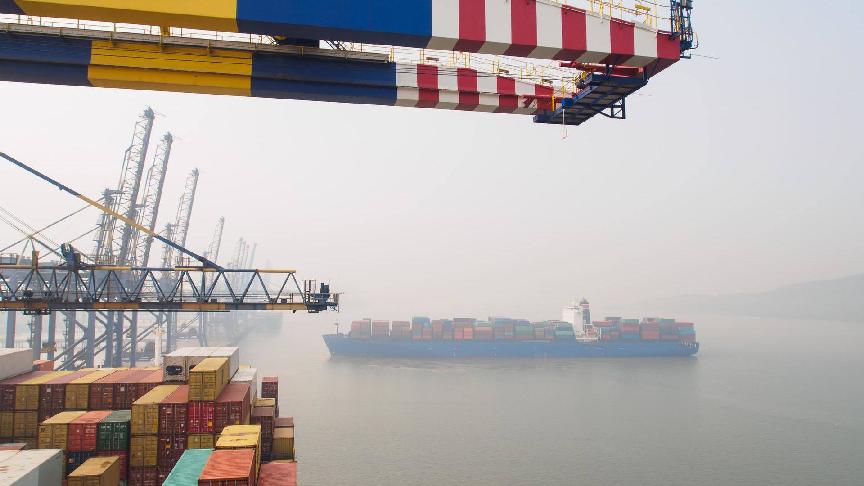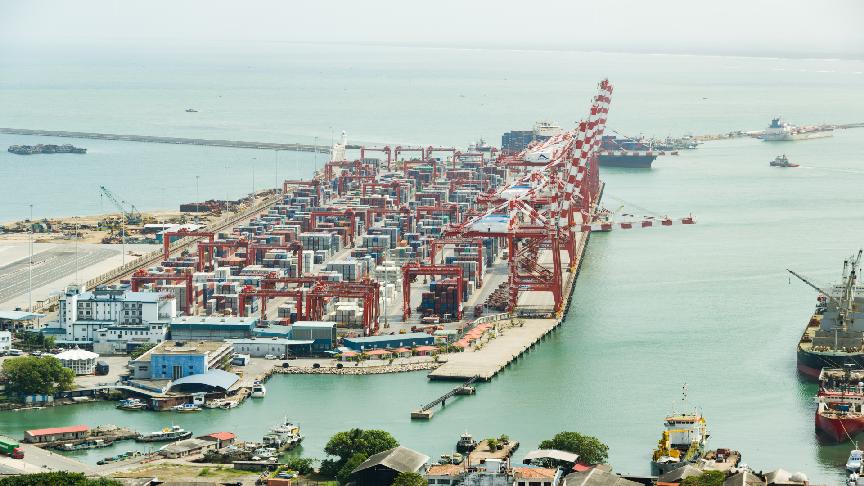Vizhinjam International Seaport, India's first and only transhipment hub, will welcome the first ship to call its port on 15 October. The general cargo ship, Zhen Hua 15, sailed from China on 31 August carrying five new cranes on board. One quay crane and two yard cranes are destined for Vizhinjam, while the remaining two will be discharged in Mundra beforehand.
According to Marine Traffic, the vessel arrived in Mundra on 29 September and will sail on to Kerela's Vizhinjam for arrival in two weeks. Initially, the Zhen Hua 15 was due to arrive on 4 October but has been delayed by recent severe weather in the East China Sea.
According to reports, Chief Minister Pinarayi Vijayan and Union Minister for Ports Sarbananda Sonowal will welcome the ship and the new equipment. The inaugural call is expected to draw large crowds from the public after the government pledged the development would create more than 5,000 direct jobs.
Following this inaugural call, three more ships are expected to call Vizhinjam, one in October and two in November.
Vizhinjam International Seaport, Thiruvananthapuram
Officially known as Vizhinjam International Seaport, Thiruvananthapuram, Vizhinjam is based in the southern state of Kerala, near the international East-West shipping route. Together with its prime location, the port's natural deep waters allow for larger vessels to call India directly, an essential prerequisite for a transhipment port.
Using this to its advantage, the local government aims to reduce India's dependence on transhipment ports outside its borders, particularly Colombo, Sri Lanka, which handles the most significant amount of transhipment cargo from/to the subcontinent.
According to the project report published by the Government of Kerela, homing India's transhipment cargo would make Indian goods more cost-competitive.
"Larger (>10000 TEU) container vessels tend to provide cost savings of at least 30% per TEU as compared to feeder vessels of sizes less than 4000 TEU," stated the report.

The port at a glance
The Government of Kerela is running the port project via its fully-owned company, Vizhinjam International Seaport Limited (VISL). Based on a Landlord Port Model, all civil works, including the construction of basic infrastructure such as breakwater, quay wall, dredging, rail and road access, will be developed by the government entity.
In 2015, Adani Ports and Logistics was selected to operate the port for 40 years (2015 – 2054). As part of the deal, the operator is responsible for developing the container yard and terminal buildings, and purchasing and operating cargo handling equipment.
Construction of the transhipment hub will be completed in three phases. On completion of the first phase, Vizhinjam will have a handling capacity of 1 million TEU and a quay length of 800m capable of accommodating 18,000 TEU container vessels. Phase one is scheduled for completion by May 2024. At the end of phase three, the port will be able to handle 3.3 million TEU annually.
Regarding intermodal connectivity, Vizhinjam Port will connect to the Southern Railway Main Line, which runs north-south and connects with Mumbai through the Konkan railway. In addition, the line connects to Tamil Nadu through Nagercoil and Tiruchirapalli in the south.
For truck access, the port is located approximately 8km from NH 47, which connects Kanyakumari in the south to Mumbai in the north.
Trivandrum International Airport lies 16km from the container gateway, where logistics infrastructure is also being planned for cargo requiring air freight.
In another effort to increase trade, earlier in September, the Indian government announced its plan to lift cabotage rules, allowing foreign-owned vessels to operate along its coast without a licence. It believes this would allow more goods to be moved between ports instead of rail and road, ultimately freeing up space in container yards while encouraging overall trade.







